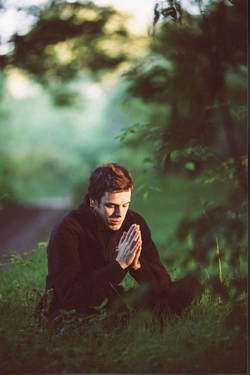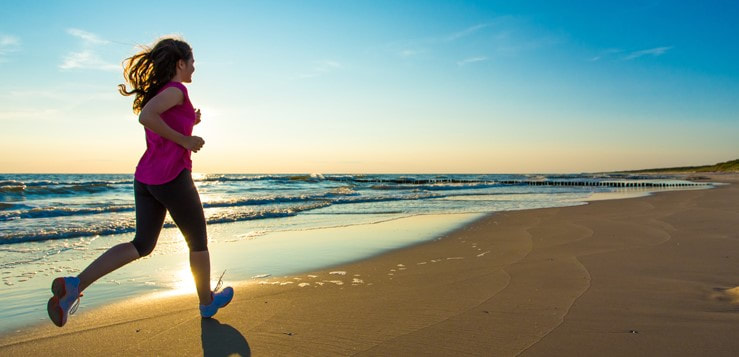
Beginner’s mind is a state of consciousness in which the mind is completely open, without any preconceptions about people, events, surroundings, or anything else. It is an incredible state of novelty, awe, and curiosity.
Entering the state of beginner’s mind is one of the cornerstones in several spiritual traditions, especially in Zen Buddhism. However, it is not important for religion only; it is one of the key practices for spiritual development and personal growth in general, even for some atheistic or agnostic practitioners. Similar to mindfulness, beginner’s mind brings about deep inner peace; it opens up the sacred heart and its ability for love and compassion; it activates creativity and unveils numerous hidden gifts. How do we grow beginner’s mind and make it take deep roots in our everyday life? Simply, we need to learn how to enter this state of consciousness first and to practice it persistently. Beginner’s mind brings about deep inner peace; it opens up the sacred heart and its ability for love and compassion; it activates creativity and unveils numerous hidden gifts.
Typically, the practitioner should enter the present moment. They have to intentionally put aside all preconceptions about the current situation; to pretend that they know virtually nothing about it; to feel genuine curiosity; to willingly observe everything as they are seeing it for the first time in their life.
Nevertheless, for some people, this practice can be insufficient for developing a strong and enduring foundation for a pure, innocent state of mind. That's why everyday meditation sessions are critical. And I am going to introduce you here to a completely new kind of meditation that will not only take you into the state of beginner’s mind but will also, if practiced steadily, help you expand your consciousness in many ways. We will name it ‘Alien Meditation,’ because you will first imagine yourself as an extraterrestrial being in an alien environment, so that your real human body and everyday surrounding seem strange and new, at least for a while. Practicing this meditation will enable you to delve deeply into the profound state of beginner’s mind, while your consciousness and creativity will be expanding tremendously. Practicing this meditation will enable you to delve deeply into the profound state of beginner’s mind, while your consciousness and creativity will be expanding tremendously.
0 Comments
We are living in a time of gadgets. Smartphones, tablets, laptops, TV, smart watches, and many other “smart” things are indisputably helpful in many tasks we are facing every day. However, all these gadgets are, at the same time, great soakers of our attention and energy, often being extremely addictive.
To many of us, building the daily habit of meditation sittings is a challenging task. Even if we establish it, we might be often distracted by many external influences, including electronic devices. When we are watching something on the device’s display, we are in fact totally immersed in that content. Our attention is entirely absorbed by the games, movies, music, images, or anything else emerging from that shiny rectangle. Our life energy is drained, and we often feel exhausted after a few hours of such an activity. And much of our free time we spend immersed in endless contents these devices offer. We have become the society of gadget-addicts. Wouldn't be awesome if we could reverse this situation somehow? Is it possible to actually transform all these gadgets into gateways to conscious living? Of course it is. Is it possible to actually transform all these gadgets into gateways to conscious living? Of course it is.
Smartphone Meditation
One of the ways to turn this immersing habit into a portal to inner freedom is this meditation. Here are the steps you may follow:
Before you begin, it is necessary to become familiar with the terms “physical attention” and “mental attention.” By physical attention, we mean to direct our eyes toward something in front of us. On the other hand, mental attention implies an intense awareness of something, which means focusing our mind on that (regardless of our eyes’ direction). 1. Focusing on the phone’s frame You can begin this meditation in whatever position or situation you find yourself in. Whether you are sitting, lying down, or standing, you can do this brief exercise, as long as you hold the phone or some other device in your hand. First, while still looking at the phone’s screen, become aware of its frame or bezels. Extend your mental attention on the frame. Remember, your eyes are physically still directed toward the center of the device’s display, while you are becoming more aware of the device’s edges. If a thought or emotion arises, just accept it. If you find a related tension in your body – accept that as well, and return to meditation. 2. Sensing the phone Now, while still being aware of the phone’s edges, become aware of the gadget as a whole. As you are holding it, feel its surface and weight. So, your mental attention should now encompass the phone’s display, the edges, and your senses of its surface and weight. All the while, keep your physical attention on the screen.
We all want to be happy and to avoid suffering. These are the two tendencies that characterize the entire living world. Every life form will strive to satisfy its needs and thus be content, but also to avoid any form of suffering.
Although being self-aware and highly intelligent, we humans are also unable to avoid pain. Whether it be physical or emotional, pain is inevitable even to the most mature or spiritually developed people. However, Buddhism claims that one can become entirely free from suffering. That final stage of human existence is being called Nirvana, or Enlightenment. It is not our topic here, at least directly. Still, if we cannot completely transcend suffering, at least we can diminish it. I will describe here instructions for dealing with various difficulties. These guidelines are based on three stages related to the hardship:
Note that it’s essential for your inner work to accurately recognize at which stage you are at that point in time. Here are the three-stage instructions: 1. Prevention - the crucial stage In your normal, everyday life conditions, in which you don’t feel any pain or suffering, you must take some time for the work on yourself. It is not only the work on preventing the hardships; it is rather the work for achieving inner transformation in a positive sense. In other words, we must face the negativities of our life, but it is not good to focus on them too often and too much. We could define it only as a preventive work, but that would imply avoiding something negative. Instead, to be more aimed at a positive transformation, we will also call it the happiness work. It should include:
We must face the negativities of our life, but it is not good to focus on them too often and too much.
Meditation
This work should be well organized and scheduled. It would be great if you could create an everyday habit of meditating twice a day, at least 15 minutes in the morning and the same duration in the evening. These sitting sessions should be scheduled for the same periods of the day, if possible. This regular practice should also include loving-kindness meditation. It would be great if you could create an everyday habit of meditating twice a day, at least 15 minutes in the morning and the same duration in the evening.
There are countless types and variations of meditation out there. For example, you may practice vipassana, breath meditation, body awareness, walking meditation, pure awareness meditation, Kriya Yoga or something else. Or, you can concentrate your mind on something, e.g., on a single dot on the wall, on a figure of Buddha or another divine being, on a flame of a candle, etc.
However, the Reintegration System has several meditative practices to offer, too:
In all of these methods, you don’t ignore or suppress the emerging thoughts and emotions during the sitting. On the contrary, you reintegrate them entirely with your whole being. Check out the above links to learn how to meditate. An essential part of your sitting practice should be the loving-kindness meditation. So, don’t forget to include at least 5 minutes of this practice into your regular meditation sittings, preferably at the end of each. An essential part of your sitting practice should be the loving-kindness meditation.
Meditation brings you:
These are not claims; these are the facts. Scientific research has confirmed them, and you can check it out on the Internet and numerous scientific magazines. What’s more important for some practitioners, meditation, together with mindfulness, will expand your consciousness and can ultimately lead you to spiritual liberation or enlightenment. The veils of ignorance and suffering will gradually (or even suddenly) lift up, and you will eventually experience Pure Consciousness as a permanent state of being. Mindfulness Another vital part of your regular happiness work is mindfulness. It simply means to live in the present moment consciously. If you want to be mindful, you will have to do any activity in such a way that you are fully conscious of yourself and of the activity itself. Although many people don’t consider mindfulness as strictly spiritual, it is indeed a spiritual practice. It leads you to your True nature while dissolving your inner conflicts softly and imperceptibly. Moreover, conscious moments in the Now will gradually accumulate and make your whole life easier. When mindfulness becomes your natural way of living, you will enjoy every task; you will become light and, in a strange way, even transparent. You will start sensing some inexplicable joy and deep inner peace. You will feel love more and more, both for yourself and for people around you. Mindfulness will abate or even prevent challenges. Author: Brad Krause"It’s my calling to help people. We all have the potential to be the best versions of ourselves we can possibly be, but it comes down to prioritizing our own wellness through self-care." We often hear of self-care as a complement to other areas of our lives, such as supporting a fitness goal or reducing our work-related stress. Self-care can also be instrumental in helping us make personal growth decisions. Much more than pampering, self-care methods such as mindfulness, meditation, and yoga helps us see deep inside ourselves to find answers to important questions. Here are some of the benefits of mindfulness in personal development and ways to harness the power of meditation in your life.
Personal Development Challenges There are many hurdles to growth and happiness in life. One of the biggest obstacles is indecisiveness. Because of our difficulty in making decisions, we often stay in situations or avoid changes in life that can provide us with more joy, income, and opportunities. There are several ways to seek guidance in personal development, including self-help books, discussion with mentors, scanning online forums and practicing mindfulness. Mindfulness is particularly helpful because it doesn’t return generic advice, but rather insights directly related to us. Mindfulness lets us know who we are, what we want, and what we need for happiness. What Mindfulness Accomplishes Introspection unlocks some under-utilized powers of the brain. It changes the way you handle stress by putting life’s challenges into perspective. Mindfulness helps people of all ages deal with life’s struggles, from a child having problems at school to a retiree struggling with senior life. It’s been effective in lowering anxiety, countering depression, aiding in addiction recovery, and dealing with eating disorders. Meditation has also been found to stimulate brain development, so your memory and cognition improves -- both of which help you make informed decisions in your quest for personal growth. Meditation is also recognized for its ability to boost career growth. In addition to relieving stress -- which can kill productivity -- meditation improves focus, creativity, and emotional intelligence. This emotional intelligence helps people collaborate more effectively with others. How to Meditate at Home A home mindfulness retreat is easy to create. Ideally, the space should be separate from your work and living areas. A quiet room with minimal decoration is a good starting point. The area should be away from the noise and distraction of your home, too. If you do not have a room to spare, you can create a mindfulness zone in any room -- just make sure it is quiet and distraction-free. Meditation requires concentration and a low-stress environment, and we are profoundly negatively affected by disorganization and clutter. If you want to meditate in your home office, for example, it would be helpful to clear away papers and work materials that will draw you away from introspection and back into outside noise. Meditation is Not the Only Path to Mindfulness Although quiet contemplation and inner reflection is the easiest way to attain mindfulness, there are other methods for those who do not like meditation. The following are additional tools to tap into calm self-knowledge when you cannot (or don’t want to) meditate:
Mindfulness opens us to possibilities that are often closed off to us when we are scared and in the dark about ourselves. Meditation and other techniques help us find answers that propel personal advancement in all areas of our lives. Photo Credit: Pixabay
Total Acceptance is such a powerful practice that its regular utilization in everyday life can profoundly and irreversibly transform our individual reality.
What is Total Acceptance? (I’m writing these words in capital letters to point to the specific meaning of this term.) It’s a state of the complete openness to any experience. It means to fully embrace all arising impressions, without a slightest inner resistance. Here, the word “Total” is maybe even redundant, but I have added it just to emphasize the absence of any resistance. We can say that Total Acceptance is Pure Awareness and, at the same time, the state of Not-Knowing, which signifies an absolute openness to the Unknown. It is a temporary absence of mind and its habitual thoughts. In other words, it is the state of Presence. However, Total Acceptance is not a dry, cold indifference. Somehow, it’s filled with deep love, as it requires not only the stillness of the mind but also the openness of the Heart. Here is an excellent quote from A Practical Guide to Acceptance and Commitment Therapy by Steven C. Hayes and Kirk D. Strosahl: “Acceptance should not be confused with tolerance or resignation, both of which are passive and fatalistic. Acceptance involves taking a stance of non-judgmental awareness and actively embracing the experience of thoughts, feelings, and bodily sensations as they occur. Total Acceptance is not a dry, cold indifference. Somehow, it’s filled with deep love, as it requires not only the stillness of the mind but also the openness of the Heart.
Another important aspect of acceptance is the strong inclination to cope with all experiences, to face everything, either pleasant or unpleasant: “Acceptance refers to an attitude of nonjudging or openness about experience, and refraining from attempts to avoid or escape it.” - Fabrizio Didonna, Clinical Handbook of Mindfulness
Everything we resist, persists. Even more, it’ll grow up over time. Therefore, the remedy for any unpleasant state or content of the mind is to accept it completely. Whenever we entirely and honestly accept any thought, emotion or sensation, we become free of it. It will not bother us anymore. It will disappear from our individual universe, as we have learned that lesson. Total Acceptance has a transformative power virtually in every field of our existence – spiritual, mental, emotional and even our physical life. For example, its strength is fully harnessed in one of the most effective methods for overcoming physical pain, “Accepting and Dwelling in Pain,” described in this article: 5 Powerful Pain Relief Techniques. The bottom line is: whatever you Totally Accept, it disappears from your field of consciousness. You become free from it. What’s also important is that this practice will not take you into passivity and non-action. On the contrary, the fruit of a regular practice of Total Acceptance will be your perfect action, whenever needed, just at a right moment. It will also yield a great deal of creativity. Nevertheless, the balance between action and non-action will be naturally achieved. Whatever you Totally Accept, it disappears from your field of consciousness. You become free from it.
Could It Be Dangerous?
When we Totally Accept something, we have embraced it wholeheartedly. But there is a troubling question that naturally arises: Is it dangerous to embrace negative, or harmful things? Can accepting an aggressive person’s behavior, ugly gossips or our friend’s problems jeopardize our security? It cannot. If it does, that only means we haven’t accepted it completely. By accepting the negativity, we are removing the negative burden on our mind and heart which has been attracting those circumstances. Moreover, the very fact that our heart is open and our being is filled with peace and love, deeply ennobles and transforms everything we do and anything we embrace. That indeed makes us safe and leaves us unharmed. By accepting the apparent negativity, you are actually accepting the Greater Good within you that is trying to emerge in your life through apparently harsh experiences. Tell yourself: “I totally accept that which is trying to emerge through me,” or “I totally accept Greater Good that is emerging through this situation.” The very fact that our heart is open and our being is filled with peace and love, deeply ennobles and transforms everything we do and anything we embrace. That indeed makes us safe and leaves us unharmed.
Yes, for the beginning, you can accept apparently evil, harmful or dangerous things and situations with your mind only, without opening your heart. You can say something like “OK, that’s it, I don’t care.” That means you can simply become indifferent and neutral toward the experience. No repulsion, and no attraction. No warmness, no embracing, no “risk.” It is an entirely disinterested position which blocks the experience to reoccur in your personal reality. But that’s only temporary. Without opening your heart completely, you cannot fully face the experience. Therefore, it may come back to you one day.
Remember, your Essence, or True Self, cannot be hurt or endangered. Ever. Without opening your heart completely, you cannot fully face the experience. Therefore, it may come back to you one day.
Ultimately, you will have to open both your mind and heart to all experiences. It’s similar to the state of Not-Knowing – total openness to the Unknown is also a genuinely transformative attitude.
If you are still concerned that Total Acceptance of negativities could open your inner door to those things to happen to you, the solution is to Totally Accept its opposite, too. But first accept that very concern, your fear of any negative reperccusions. Then accept the negative thing itself. Finally, accept its opposite – a normal state, or a wanted, positive thing. If you cannot accept any of these, you might be dealing with a complex subconscious structure. Those structures should be thoroughly reflected and processed with some of the main Reintegration techniques (preferably the Inner Triangle), or with some other psychological or spiritual method. Finally, with both polarities Totally Accepted, while being free from the ingrained fear, we’ll be able to act from Presence genuinely.
How to Totally Accept
The skill of Total Acceptance should be learned progressively. It is always easy to accept something you like, or you are being neutral to, but accepting unpleasant or painful experiences is a completely different story. Therefore, we should start learning acceptance on neutral things first (because you have no intimate relationship with them), then on positive ones (although you have a positive relation toward them, it is still a kind of attachment), and lastly on the negatives. Here is an exercise for learning this skill thoroughly: Author:Martin Morrison Who is the real boss in your mind? Almost since the day you were born, you have been the victim of unconscious programming from internal and external processes. It is funny how those with the strongest minds and most forceful personalities will insist that hypnosis doesn’t work on them, that they are not influenced by others and that they are masters of their own world. Sadly, this is simply not true. It is a fiction. We come into the world like a boxed computer; there’s an operating system in place but the software is yet to come. Language, culture, religion, attitudes and experiences all follow. The external programming that takes place is easy to see - parents, peers, family, teachers, religious representatives, media, art, dramas...the list, quite literally, is endless. Voices from within The internal programming is slightly more subtle and yet even more powerful. This is where we collaborate with our own growth...or downfall. Every experience is compared and contrasted with past experiences and measured against hopes, dreams and expectations. All these concepts are interdependent which means the sense of self and its level of contentment is governed by a boatload of phenomena that are mainly unconscious. Put simply, the unconscious chatter that goes on in our minds is also affecting our sense of who we are, the world we live in and our place within it. Awakening: the first step Realising that we have an internal world of barely audible mental chatter, thoughts, reflections, memories, feelings and emotions that are governing how we engage with people, situations and our environment is the first step to liberating ourselves from our programming. But that is a scary thought. That means accepting that our religion isn’t the absolute truth, that our customs and beliefs have been inherited. What? How dare he say this! I am a [insert faith denomination here] because I genuinely believe it to be true and I choose it every day. Sorry. That is simply not true. I am not dismissing religion and culture and I mean no offence to those who value tradition. These are positive software packages that have been installed into our operating systems, but software packages nevertheless. Censored If you don’t accept the programming is happening, if you don’t acknowledge that many aspects of your attitude and approach to life have been determined by birth because of the influences you have been exposed to, then there will be large parts of your psychological landscape that you have no hope of unravelling. Your mind will read like a classified government document with large swathes of text and images blacked out.  I’ve been programmed: now what? Just like the software on your phone, mental programming can be updated or overwritten. Even the entire operating system can be changed. The operating system is a different kettle of fish and not the focus of this article however, for clarity, you can think of it as the physical status of the person - how their brains are hardwired, physical health etc. If you suffer a stroke, you may have to start again from scratch with an entirely different operating system than you had before. Let’s look at the programming process and how we can take control of it. There are a number of ways that we can consciously program our minds. Some or all of these will be familiar to you but you may not have thought of them as programming techniques. These are:
Prayer as a mental programming technique Let’s look at the Christian’s “Lord’s Prayer” or “Our Father” as an example. This is just an example and I am not singling out Christians from any other religion. The prayer reads like this: “Our father who art in heaven, Hallowed be thy name, Thy kingdom come, Thy will be done, On Earth as it is in Heaven. Give us this day, our daily bread And forgive us our trespasses, As we forgive those who trespass against us, And lead us not into temptation, But deliver us from evil. Amen” When a Christian recites this prayer, they believe they are speaking directly to the almighty, one God, that God will hear this prayer from them personally and that God can choose to respond to it. Regardless of whether what they believe is true or not, while they believe it to be true (faith can move mountains), there is a mechanism that will bring about internal peace and contentment - and better outcomes for the person in their everyday life. When we break the prayer down, we see that it contains several principles that are vital to growth and mental health:
When a person makes a conscious choice to be mindful of these things in their day-to-day life, the results can be transformative. In my mind, it is no coincidence that practitioners of the faith feel as though they are experiencing a genuine relationship with the living Christ and/or with God. These principles allow us to engage with reality more effectively. The result, a much more charismatic person. Note the root of the word, “charisma” - Krishna and Christ both share that root. We see the word in Russian as well - “Xarasho” (pronounced Ch-ah-rosh-oh where “ch” sounds similar to the “ch” in the Scottish “loch”).
This is not intended to be a religious post however, for those that feel I am chipping away at their faith, let me reframe it in a different way. My assertion that prayer is a form of mental programming does not have to mean there is no God but it does require a different way of thinking about God. Some believe that we are all part of the one living God, sharing a universal consciousness. By the same token, by tuning into our “bigger mind”, we have the power to completely reset our software. Arguably, most people identify with their software, their ego identity, which means they spend their lives experiencing an identity crisis as one version of self after another is corrupted, becomes obsolete or ineffective, or completely collapses (mental illness, neurosis, breakdown). The problem with prayer If you have ever met a devoutly religious person who has encountered a crisis in their faith, there lies the problem. They have to keep the faith. Faith really does move mountains. If the faith is not there, the conviction is not there in the prayers. They become ineffective. Negative thinking sets in. This affects how the person interacts with their world and that behaviour affects their outcomes. It is a vicious circle. Prayer works well until we lose our most precious loved ones or some other dreadful event takes place. That said, even when people lose faith or experience doubt, prayer still has some effect. Evidence has suggested that when we say something with our physical or internal voice, the subconscious believes it - even if our conscious self doesn’t. What about hypnosis? Hypnosis is a collaborative game played by two or more people. The person to be hypnotised agrees to allow the hypnotist access to their minds. The hypnotist acts a facilitator really to help the subject reframe their thinking but it is a collaboration. The hypnotist cannot make the other person do anything that person would not want to do. Does that mean the person has to give permission to be hypnotised? We do not have to give permission to be hypnotised. We do not even need to believe that hypnosis is possible. If a hypnotist wanted to get you to run around the street naked, this is not likely to happen. You would see them coming from a mile away and you would resist the attempts to be programmed. The gate would be closed. Hypnosis is happening all around us One only has to look at how drastically fashion trends can change or other ways that people allow themselves to be influenced by advertising, celebrity culture or slick copywriting to see how much our mindsets are subtly being worked on by external forces. When we agree to be hypnotised and we cooperate with the hypnotist’s instructions, it is possible for us to enter a very deep trance-like state, where ideas can be placed using affirmations, storytelling and visualisation techniques. The effect can be intense and powerful. What’s the problem with hypnosis? Imagine the least tech-savvy person in the office. They spend all day on a computer, opening window after window without ever shutting one down, never clearing their temporary internet files or their emails. Every few months, they hit a critical point when their computers can’t function due to a shortage of working memory (for example). So they give a call to the IT person. The IT person logs on to their machine remotely and identifies the problem or fixes it. The problem is solved but it is temporary. The hypnotist gives you fish but doesn’t show you how to fish The IT person may give a lecture on best practice but if it doesn’t sink in or is not understood, they are given another call three months later. So it is with hypnosis. When we agree to be hypnotised, we allow the hypnotist to help us fix a particular problem - smoking, chocolate addiction, aversion to exercise - but we are not necessarily any wiser in terms of how our own mind works. What is auto-hypnosis or self-talk? Once you understand the mechanisms at work, you can hypnotise yourself. Even by saying positive things to yourself on the way to a date (“I look great. They will love me.”), the mindset can be affected. This is why it is so important to be mindful of the words that come out of our mouths and the thoughts that we allow ourselves to dwell on. Those who study a little more can learn how to take themselves into a deeper trance or they use music to achieve the same objective. Then they will repeat carefully crafted affirmations or listen to a well-written visualisation script, to reset their thinking. What’s not to love here? Nothing it all. It is all good. However, just like hypnosis, what we are doing is going in and fixing specific issues that we have identified. We are not gaining a greater understanding of our mind. There are many blind spots. Meditation as a route to mental programming Let me first of all start by spelling out what I mean by meditation and differentiating it from mindfulness. This is a subtle, yet important point. If we choose to focus all our attention on this moment, every physical sensation, every aspect of our perception etc., then that is mindfulness and yes, it is meditation as well. Meditation, in the strictest sense, is not something that is done. It is how other things are done! Mindfulness will only go so far in helping us grow because if I am being mindful while I eat my favourite food or mindful while I practise tai chi, the focus is on the activity of eating or the feeling of movement through the tai chi forms. That is great but won’t necessarily deliver increased self-knowledge, wisdom or the meaning of life. If I decide to practise mindfulness while I am lying down or sitting still in a quiet place, as my awareness “realises” that there is nothing to see in the outside world, it has to focus its attention inwards - to the mind, to the internal world. This is what I mean by meditation.
Many people just don’t like meditating in a sitting posture, as they prefer a horizontal position instead.
Some practitioners also want to meditate or practice mindfulness in every possible situation and bodily posture, from sitting to lying in bed, to walking, to exercising, and even to sleeping. Here you will find some ideas, backed with great feedback of numerous practitioners, that might be helpful to all of you wanting to meditate even while lying down. But first, why should we do the meditation in a horizontal position in the first place? Benefits of Meditation Lying Down There are so many benefits. As all other types of meditation and mindfulness, this kind of practice will bring you:
These are not claims, these are the facts. They have been confirmed by countless scientific researches and explorations, and you can check it out on the Internet and numerous scientific magazines. Lying Down Meditation as Preparation for Sleep One of the most reliable methods that can lead you to a conscious and deeply relaxing, rejuvenating sleep is Yoga Nidra. It is an ancient practice which can bring you exquisite results. One of the most reliable methods that can lead you to a conscious and deeply relaxing, rejuvenating sleep is Yoga Nidra.
Nidra, which means “yogic sleep,” is a meditation that deals with deep sleep consciousness. During this meditation, through which you are typically guided by an instructor, you are scanning your body and entering a very deep state of relaxation. During this process, your body will slip into a deep sleep, and yet your mind will remain fully aware.
How to Meditate in Horizontal Position First, if you are tired, do not close your eyes, as you will dive into sleep soon. If you feel fresh and energized, and still don’t want to, for example, do a walking meditation outdoors, then you may close your eyes. It is advisable that your lying posture is similar to the ‘savasana’ pose in yoga, which basically involves lying down flat on the back with your palms facing upward.
In a normal, “waking” state, we are almost always completely immersed in whatever we are doing at the moment. We might even say that we are fully absorbed in here and now.
However, If the point of mindfulness is to be here and now, doesn’t that mean that we are meditating every time we are completely immersed in some activity? Whenever we exercise, play football, listen to music, watch TV, talk with our friend, think, or even fight – we are fully in the present moment, right? The tricky question Thinking this way, can we say that activities which typically consume our attention are also a sort of meditation? Well, no. We are lost in such activities. Usually, we are totally absorbed in playing the game, listening to music, exercising, whatever…and we have become that activity. Our consciousness is focused completely on it. Moreover, the answer to the previous question also depends on how we define meditation. Let’s use the broader meaning of meditation, that includes mindfulness. It means that we are meditating here and now, whatever we are doing, without any redundant contents of mind, aware of our surroundings and ourselves. When thoughts or emotions arise, we simply become aware of them, let them go and return to the Now. Can we say that activities which typically consume our attention are also a sort of meditation?
To live in the Now means to live consciously, to fully experience ourselves and our surroundings without redundant thoughts and distractions.
One could say that deep sleep is also a thoughtless state. That’s true, but it cannot be regarded as the living in the Now because it is not a conscious state. One could also say that while we are immersed in unnecessary thinking, we are in the Now too because we are experiencing those thoughts in the present moment. But that is also not a fully conscious state, as we are identified with those thoughts, so it’s not really being present in the Now. Author: Jane Bolto With a background in Marketing, Jane Bolto currently works as a Content Specialist at Nybizdb.com. Always willing to share her passion for new marketing strategies. Finding balance in life is incredibly important. One of the secrets to finding happiness is capturing that balance, so that everything in life is steady and even. You should never be too stressed, too worried, too angry, too hurt. These things need to be addressed before you can find happiness. Here’s how a meditation retreat helped me to find that balance, and to understand how it makes a real difference to life. Physical Balancing:
The first thing that I learned was that physical balance is an important foundation. When you sit in your meditation pose, you should always find a comfortable balance. You should sit neither hunched forward, nor leaning back. You should not tilt to one side or the other. When you take your seat, gently rock your body around until you find that exact middle point. You will feel the tension flowing out of your body as you find your centre. If you cannot get your physical balance right, it is very difficult to let go of physical concerns and detach your mind. If you can’t do that, then mental balance is nearly impossible. AuthorNebo D. Lukovich There are countless relaxation techniques that can be found on the Internet. I would like to present you here a procedure which is a mixture of well-known step-by-step relaxation methods and one of the basic Reintegration System's techniques called “Dissolving the Temporary I.” We will call this relaxation procedure the “Relax and Reintegrate” technique (RR). It is not much time-consuming, and is suitable for many purposes, whether we want to get rid of stress or to prepare ourselves for a meditation or some more complex inner work. I have to emphasize that this method is not a mere relaxation process. It is a kind of deep meditation on itself. It releases huge amounts of tension, stress and anxiety. Moreover, through this technique, we will often be removing many layers of various inner obstacles, such as traumatic memories, suppressed emotions, limiting beliefs, etc. Any tension in our body is actually caused by some of these inner hindrances, and by releasing it we are re-integrating those particular causes, directly or indirectly. Here is the Relax and Reintegrate technique:
By doing this way, any tension will be gone quickly and completely. If any emotion or other content of the mind appears, it simply means that the tension was caused by it and now it’s released, ready to be re-integrated into the wholeness of your being. Do not miss this chance. Do the DTI immediately on every mind content which arises. In this way, the simple relaxation turns out to be a deeply transformative meditation. Of course, you will need to learn the DTI technique and make it habitual. But once it becomes a routine, you will be able to do the RR technique anywhere. You can RR while you are waiting in a queue, when you are lying in bed, or while sitting, whenever you have some free time. You will only have to adjust slightly the procedure to the particular circumstances. If done regularly, it will deeply transform your life. |
Please note that most of the articles have a "Read More" break, which is sometimes hardly visible.
It is located at the bottom of visible part of the article, on the right side. To continue reading the article, click on that link. This page may contain affiliate links meaning we earn a commission if you use those links.
We only recommend pages we appreciate and trust. Archives
March 2023
Categories
All

|
For guest posts or placing ads on our website, please use the contact form on the 'About/Contact Us' page.

















 RSS Feed
RSS Feed

